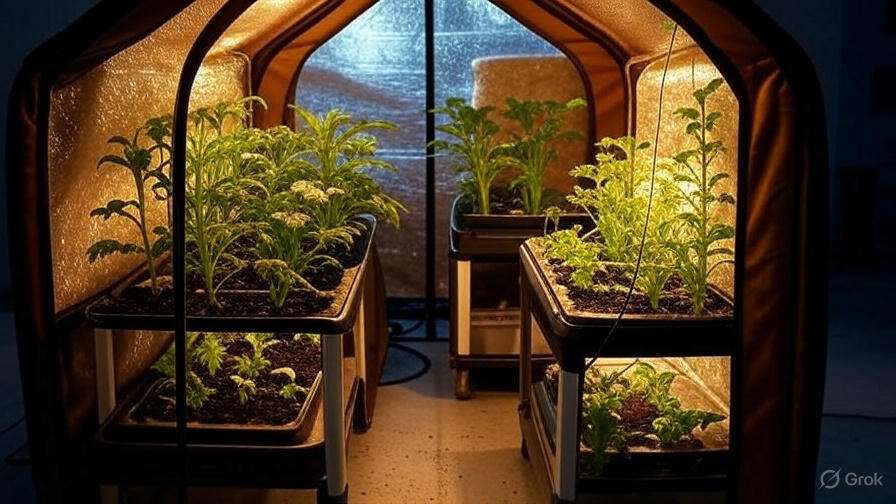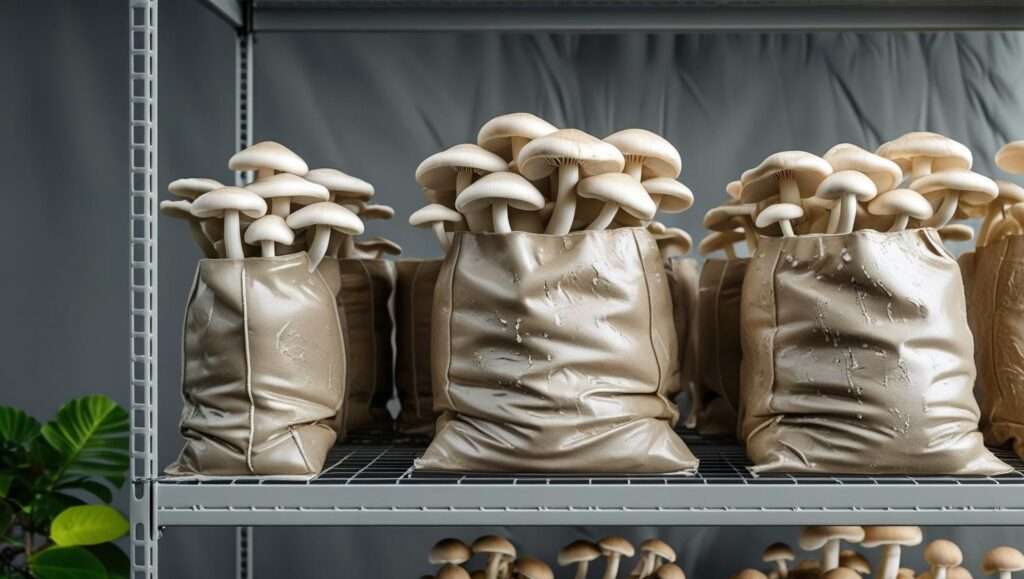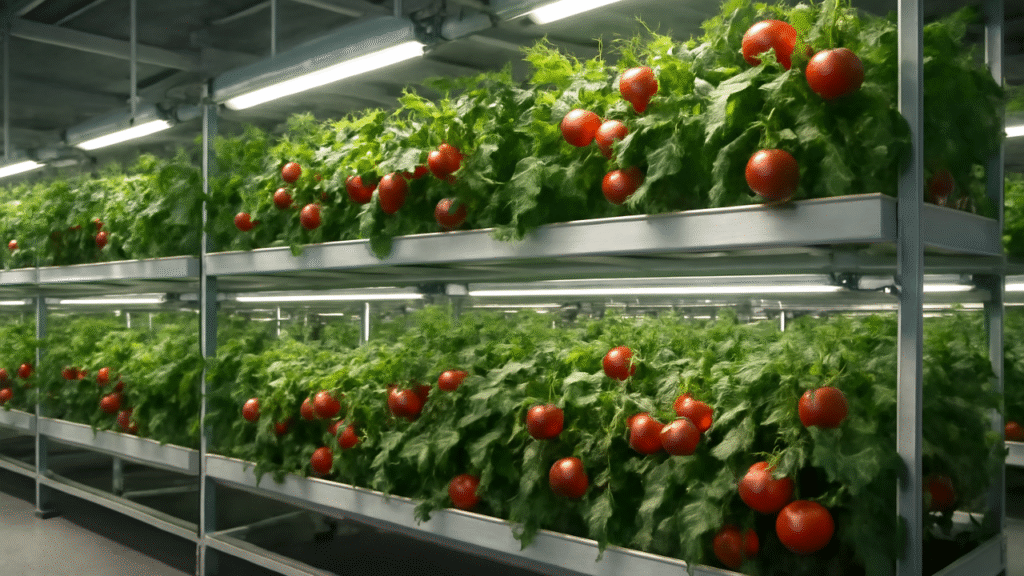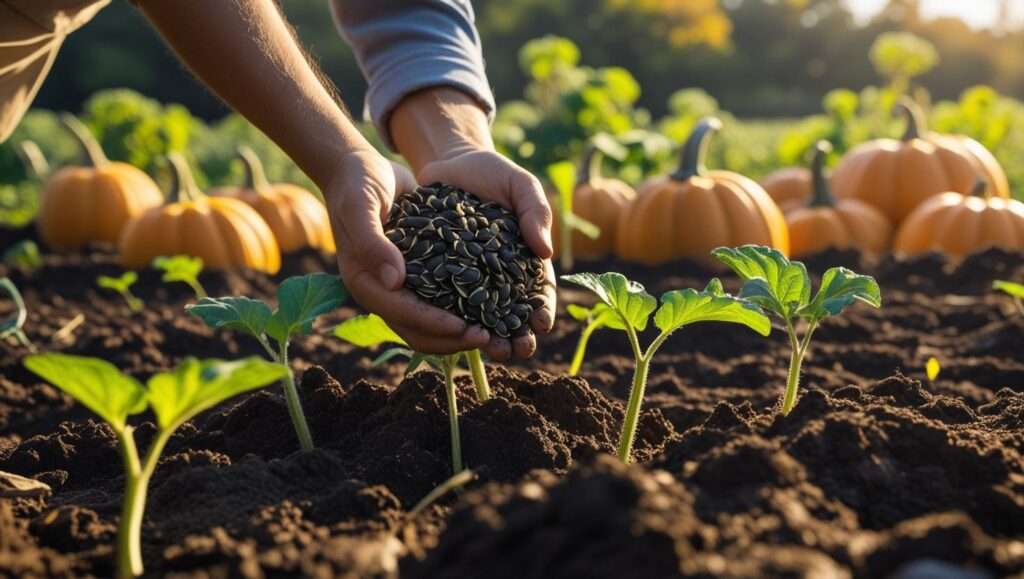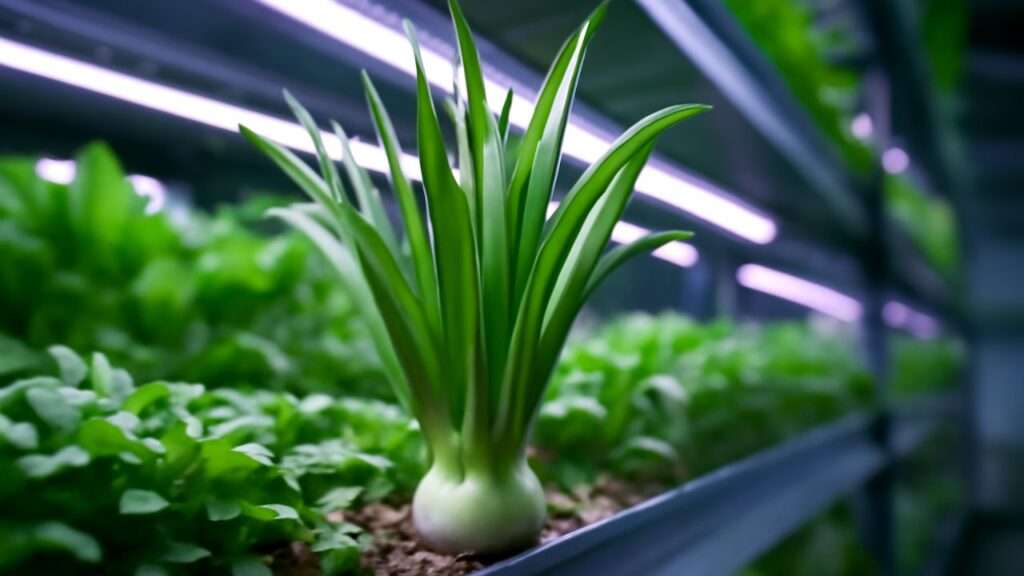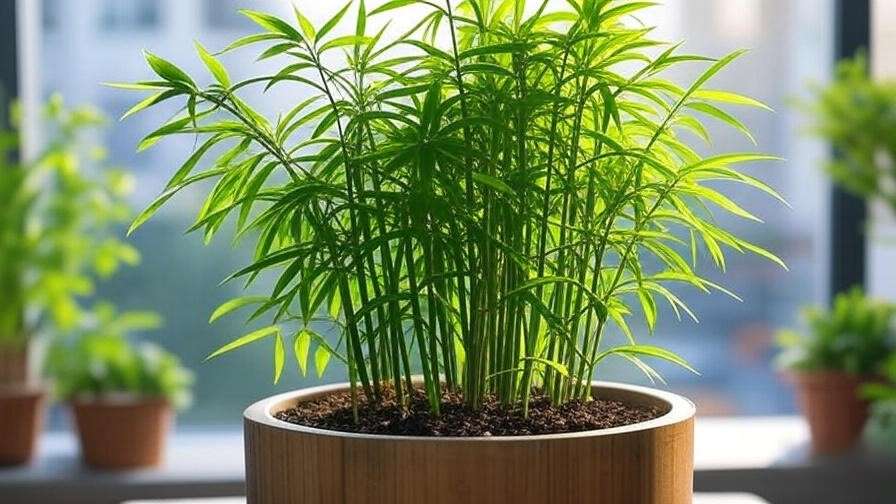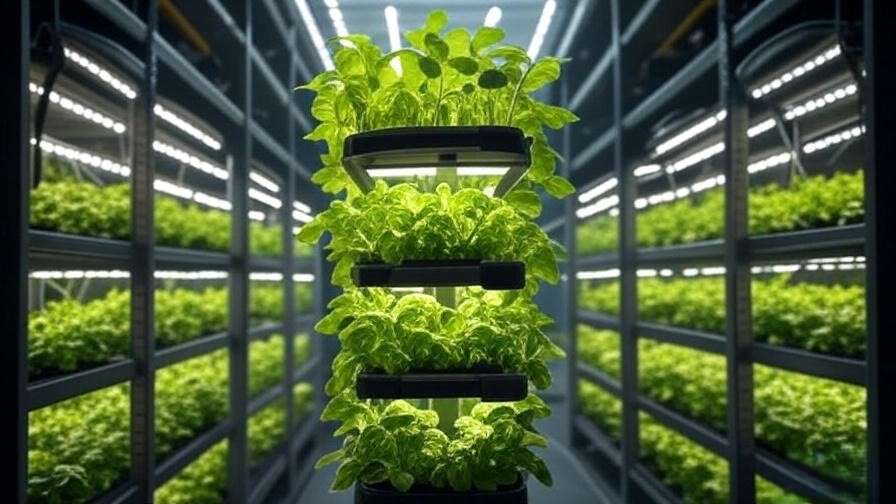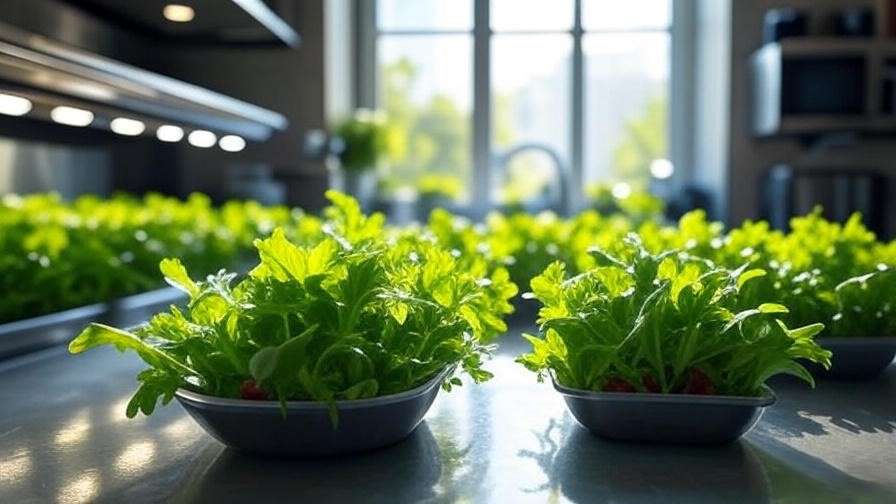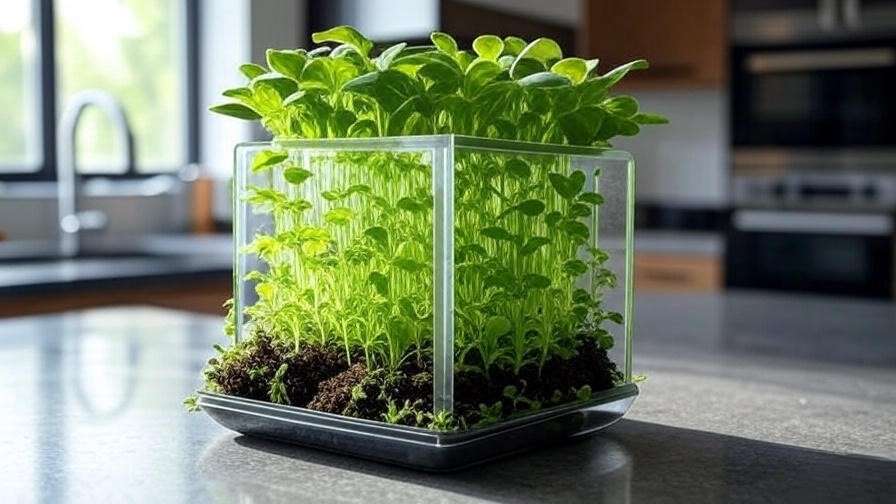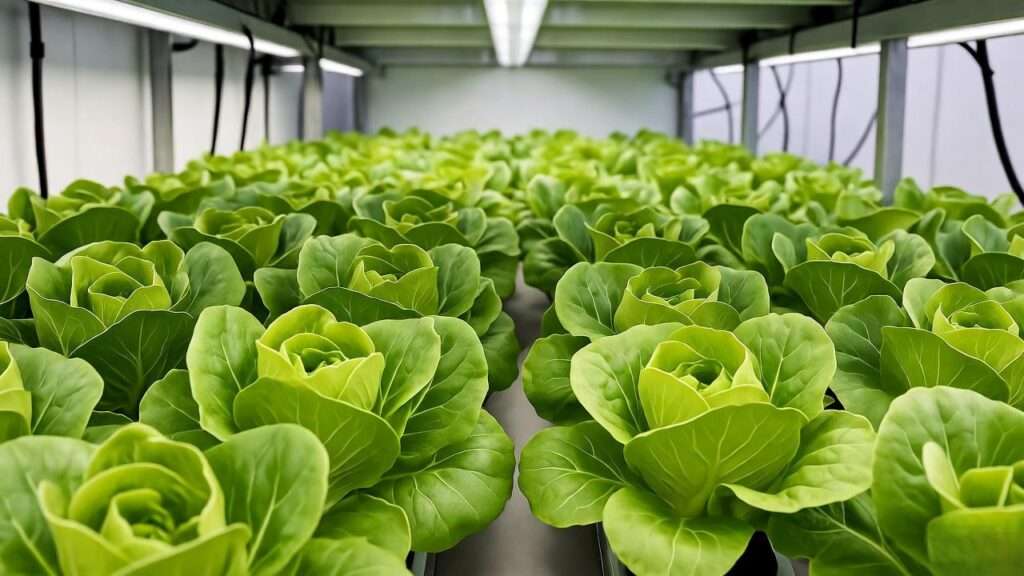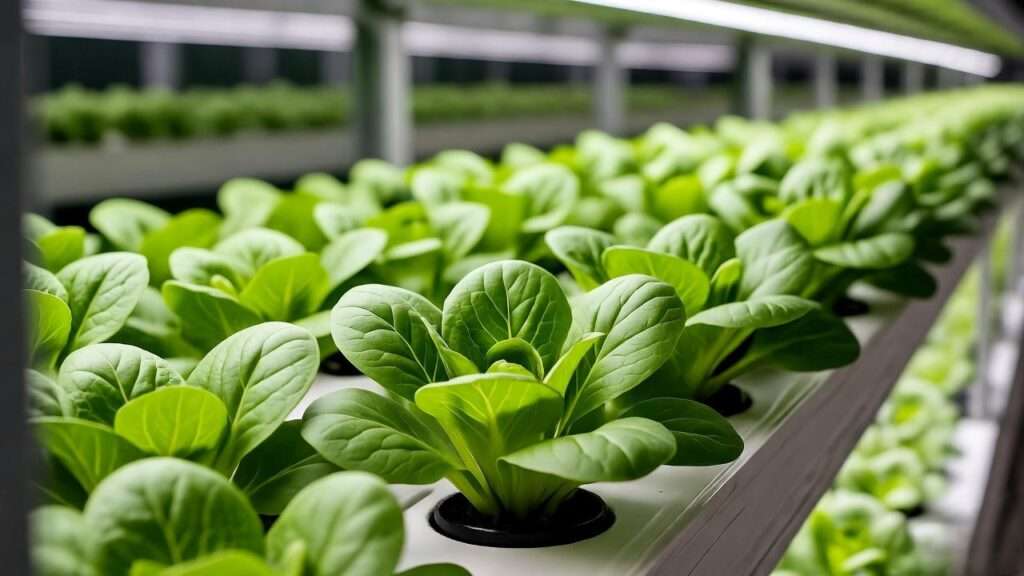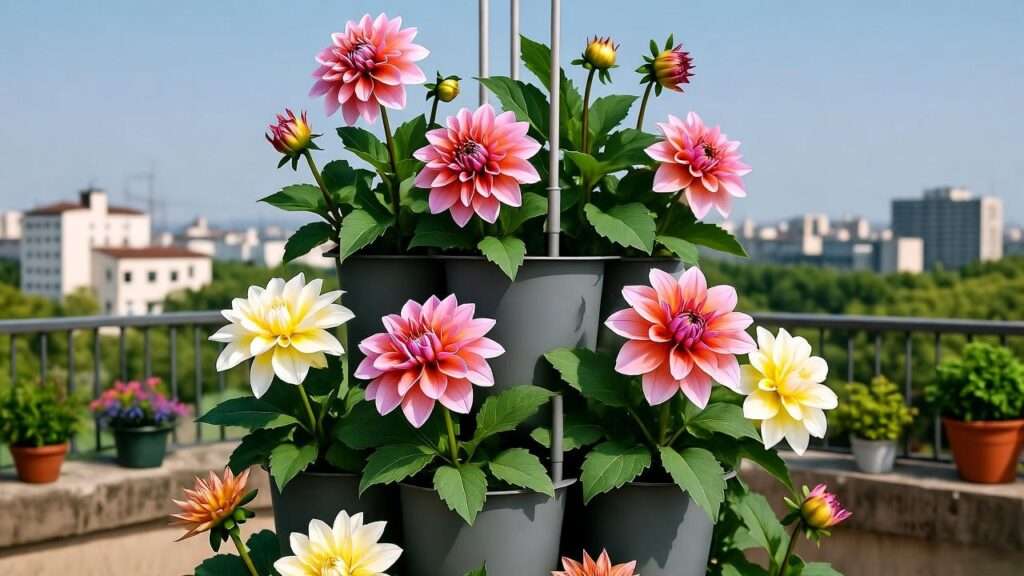Picture this: your vertical farm is thriving, with lush greens and vibrant vegetables reaching for the light in your grow tent. But as night falls, a silent threat looms—plummeting temperatures that could stunt growth or wipe out your crop. Knowing how to keep your vegetable grow tent warm at night is critical for consistent yields and healthy plants, especially in vertical farming where space is tight and conditions are controlled. Cold nights can stress plants, reduce growth rates, and lower your harvest quality, but with the right strategies, you can maintain optimal warmth and keep your farm flourishing year-round.
As a vertical farming enthusiast with years of experience and insights from agricultural experts, I’ve compiled this comprehensive guide to help you tackle nighttime temperature challenges. From insulation hacks to smart automation, this article offers actionable, science-backed solutions tailored to vertical farmers. Expect practical tips, real-world examples, and expert insights to ensure your grow tent stays cozy, efficient, and productive—no matter the season.
Why Temperature Control Matters in Vertical Farming
The Science of Plant Growth and Temperature
Temperature plays a pivotal role in plant health, influencing everything from photosynthesis to nutrient uptake. Most vegetables, like lettuce, spinach, tomatoes, and herbs, thrive in nighttime temperatures between 60–75°F (15–24°C), depending on the species. For instance, leafy greens prefer cooler ranges (60–65°F), while fruiting crops like tomatoes need slightly warmer conditions (65–75°F). When temperatures dip below these thresholds, plants experience stress, leading to slower metabolism, reduced growth, and increased susceptibility to diseases like powdery mildew.
Cold nights disrupt enzyme activity and nutrient absorption, stunting root development and delaying harvests. In a 2023 study from Cornell University’s Controlled Environment Agriculture program, researchers found that a 5°F drop below optimal nighttime temperatures reduced lettuce yields by up to 15%. For vertical farmers, where every square inch counts, these losses can be significant. Maintaining stable warmth ensures your crops stay on track for maximum productivity.
Unique Challenges of Vertical Farming
Vertical farming’s compact setups amplify temperature challenges. Grow tents, often made of reflective materials like mylar or lightweight canvas, lose heat quickly due to their thin walls and high surface-to-volume ratio. Unlike traditional greenhouses, grow tents lack the thermal mass of soil or large structures to retain warmth. Urban environments, where many vertical farms operate, add complexity—basements, apartments, or unheated warehouses can expose tents to cold drafts or fluctuating room temperatures.
For example, Jane, a vertical farmer in Chicago, noticed her kale and arugula wilting during winter nights when her grow tent dropped to 55°F. By implementing targeted heating and insulation strategies (detailed below), she boosted her yields by 20% and extended her growing season. Her success underscores the need for tailored solutions in vertical systems, where precision is key.
Key Factors Affecting Grow Tent Temperature at Night
Insulation and Tent Material
The material of your grow tent significantly impacts its ability to retain heat. Mylar-lined tents reflect light but conduct heat poorly, leading to rapid cooling at night. Thicker canvas or insulated tents, while more expensive, offer better thermal retention. Poorly sealed zippers, vents, or ducting ports can also let cold air seep in, undermining your efforts to maintain warmth.

When choosing a grow tent, prioritize models with high-denier fabric (e.g., 600D or higher) and double-stitched seams. If upgrading isn’t an option, retrofitting your existing tent with insulation can make a big difference (see methods below). Placement matters too—avoid setting your tent on cold concrete floors or near drafty windows, as these amplify heat loss.
External Environment
The room surrounding your grow tent sets the baseline for its internal temperature. In colder climates or unheated spaces, nighttime room temperatures can drop significantly, pulling down tent conditions. Seasonal changes exacerbate this—winter nights in northern regions can dip below freezing, challenging even well-equipped setups. Urban farmers in apartments may also face issues from inconsistent building heat or ventilation.
For instance, placing a grow tent in a garage without supplemental room heating can lead to temperature swings of 10–15°F overnight. Monitoring external conditions and insulating the surrounding space (e.g., with curtains or foam panels) can help stabilize your tent’s environment.
Equipment and Heat Sources
Grow lights, fans, and ventilation systems influence nighttime temperatures. High-intensity discharge (HID) lights like HPS generate significant heat, which can help during light-on periods but leaves tents vulnerable when lights are off. LED lights, while energy-efficient, produce less residual heat, requiring additional warmth sources at night. Over-ventilation, often used to control humidity, can also strip away heat, especially if exhaust fans pull in cold outside air.
Common mistakes include running fans continuously or using undersized heaters that can’t keep up with heat loss. Understanding your equipment’s thermal output and adjusting its operation is crucial for maintaining stable nighttime conditions.
Proven Methods to Keep Your Vegetable Grow Tent Warm at Night
Insulating Your Grow Tent
Insulation is your first line of defense against heat loss. Here’s a step-by-step guide to insulating your grow tent effectively:
- Assess Your Tent: Identify heat loss points (zippers, vents, seams) using a thermal camera or by feeling for drafts.
- Add Reflective Insulation: Line the interior with reflective foam boards or bubble wrap coated with mylar. These materials trap heat while maintaining light reflectivity.
- Seal Gaps: Use weather-stripping tape or silicone caulk to seal zippers and vent flaps without blocking airflow entirely.
- Exterior Blankets: Wrap the tent in thermal blankets or moving pads during colder months for extra insulation.
Pros of DIY Insulation: Cost-effective (bubble wrap costs $10–20 per roll) and customizable.
Cons: May reduce ventilation if not done carefully.
Expert Tip: Ensure at least 10–20% of vent openings remain unobstructed to maintain CO2 levels and prevent mold.
For example, a vertical farmer in Oregon doubled their tent’s heat retention by adding a layer of reflective bubble wrap and sealing vent gaps, cutting heating costs by 30%.
Using Heating Devices Safely
Heating devices are a reliable way to maintain warmth, but safety and efficiency are paramount. Here are the best options for grow tents:
- Ceramic Heaters: Compact, safe, and efficient for small to medium tents (100–300W models for 4×4 ft tents). Look for models with built-in thermostats.
- Heat Mats: Ideal for seedlings or root zones, placed under trays to provide gentle warmth (20–50W).
- Radiant Panels: Low-wattage panels (50–100W) that emit steady heat without drying out air.

Comparison Table:
| Heater Type | Cost (USD) | Efficiency | Best For | Safety Notes |
|---|---|---|---|---|
| Ceramic Heater | $30–100 | High | Medium-large tents | Use with thermostat, keep away from fabric |
| Heat Mat | $15–40 | Moderate | Seedlings, small tents | Ensure waterproof models |
| Radiant Panel | $50–150 | High | Consistent heat | Mount securely, avoid plant contact |
Safety Precautions:
- Use heaters with auto-shutoff features to prevent overheating.
- Keep heaters at least 12 inches from tent walls or plants.
- Regularly inspect cords for fraying to avoid fire risks.
A vertical farmer in New York used a 150W ceramic heater with a digital thermostat to maintain 68°F in their 4×4 ft tent, boosting tomato yields by 25% during winter.
Leveraging Grow Lights for Residual Heat
Grow lights can double as a heat source if timed strategically. HID lights (e.g., HPS or CMH) generate significant warmth, so scheduling light cycles to overlap with the coldest nighttime hours can help. For LED setups, which run cooler, consider running lights for short bursts (e.g., 30 minutes every 2 hours) during the night to add residual heat without disrupting plant photoperiods.
Example Adjustment: For a 16/8 light cycle, shift the “on” period to start at 4 PM and end at 8 AM, covering the coldest early morning hours. Monitor plant responses to ensure light changes don’t stress crops.
Thermal Mass Techniques
Thermal mass involves using materials like water or stone to absorb, store, and release heat. In a grow tent, place sealed water containers (e.g., 5-gallon jugs) or dark-colored stones near heat sources during the day. At night, these materials slowly release stored heat, stabilizing temperatures.
How to Implement:
- Place 2–3 water jugs in the tent’s corners, ensuring they don’t block light or airflow.
- Use dark containers to maximize heat absorption.
- Example: A California farmer added two 5-gallon water jugs to their 5×5 ft tent, maintaining 65°F overnight without additional heaters.
Benefits: Low-cost, sustainable, and passive.
Drawbacks: Takes up space and requires careful placement to avoid mold.
Smart Temperature Monitoring and Automation
Modern technology makes temperature control precise and hands-off. Smart thermostats, Wi-Fi-enabled sensors, and temperature controllers ensure consistent warmth. Recommended tools include:
- Inkbird ITC-308: A plug-and-play thermostat for controlling heaters ($35–50).
- Govee Wi-Fi Thermometer: Monitors temperature and humidity remotely via a smartphone app ($20–40).
- Tuya Zigbee Sensors: Integrate with home automation systems for advanced control ($15–30).

- Install a sensor in the center of the tent at canopy level.
- Connect to a thermostat that controls your heater or fan.
- Set temperature thresholds (e.g., turn heater on at 60°F, off at 65°F).
- Use apps to track trends and receive alerts for anomalies.
Case Study: A vertical farmer in Toronto used an Inkbird controller with a ceramic heater, reducing temperature fluctuations to ±2°F and improving lettuce quality.
Cost-Effective and Sustainable Solutions
DIY Heating Hacks for Budget-Conscious Farmers
For vertical farmers on a tight budget, DIY solutions can keep your grow tent warm without breaking the bank. Here are some creative, low-cost methods:
- Hot Water Bottles: Fill sealed containers with hot water and place them inside the tent before lights-off. They release heat gradually over several hours. Use sturdy, leak-proof bottles to avoid spills.
- Insulated Curtains: Hang thermal curtains or old blankets around the tent’s exterior to trap heat. Secure them with clips to allow easy access.
- Recycled Materials: Repurpose foam packing sheets or cardboard lined with aluminum foil as makeshift insulation panels. These can be cut to fit around vents or corners.
Example: A hobbyist farmer in Seattle used two hot water bottles and foil-lined cardboard to maintain 62°F in their 2×2 ft tent, saving $50 monthly on electricity compared to using a heater.
Tips for Success:
- Rotate hot water bottles every 4–6 hours for consistent warmth.
- Ensure DIY insulation doesn’t block ventilation or create fire hazards.
- Combine with other methods (e.g., thermal mass) for better results.
These hacks are ideal for small-scale setups or temporary solutions during cold snaps, offering practical warmth without high costs.
Eco-Friendly Heating Options
Sustainability is a core principle of modern vertical farming, and eco-friendly heating methods align with this ethos. Consider these options:
- Solar-Powered Heaters: Small solar panels paired with battery storage can power low-wattage heaters overnight. While initial costs are higher ($100–300), they reduce long-term energy bills.
- Compost-Based Heating: Place a small compost bin near the tent (outside, to avoid odors) and use the heat generated from decomposition. Run insulated tubing to channel warm air into the tent.
- Passive Solar Heating: Position water-filled containers near a sunny window during the day to absorb heat, then move them into the tent at night.

Environmental Benefits: These methods lower your carbon footprint and appeal to eco-conscious consumers, enhancing your farm’s marketability. For instance, a 2024 report from the USDA highlighted that sustainable farming practices increased consumer trust by 30% in urban agriculture markets.
Implementation Tip: Start with one eco-friendly method (e.g., solar-powered heat mats) and scale up as your budget allows. Monitor energy savings to justify upfront costs.
Balancing Heat and Humidity
Heating a grow tent often reduces humidity, which can stress plants, especially humidity-loving crops like basil or spinach (ideal range: 50–70%). Low humidity causes leaf curling, slower growth, and reduced nutrient uptake. Here’s how to maintain balance:
- Humidifiers: Use a compact ultrasonic humidifier ($20–50) with a built-in hygrostat to maintain consistent moisture levels. Place it away from plants to avoid waterlogging.
- Water Trays: Place shallow trays of water near heat sources to increase evaporation and humidity. Add pebbles to maximize surface area.
- Ventilation Adjustments: Reduce exhaust fan speed at night to retain moisture while ensuring enough airflow to prevent mold.
Expert Insight: Dr. Emily Chen, a controlled environment agriculture researcher, notes, “Balancing heat and humidity is critical in small grow tents. A 10% humidity drop can reduce leafy green yields by up to 8%.” Regularly check humidity with a digital hygrometer and adjust as needed.
Troubleshooting Common Nighttime Temperature Issues
Overheating Risks
While keeping your grow tent warm is the goal, overheating can be just as damaging. Excessive heat (above 80°F for most vegetables) causes wilting, nutrient burn, or flower drop in fruiting crops. Signs of overheating include drooping leaves, scorched tips, or unusually fast water loss.
Prevention Tips:
- Use thermostats to cap heater output (e.g., set to shut off at 75°F).
- Monitor canopy-level temperatures, as heat rises and may concentrate near lights.
- Ensure adequate ventilation to dissipate excess heat without losing too much warmth.
Quick Fix: If overheating occurs, temporarily reduce heater runtime or open a vent for 10–15 minutes to stabilize conditions.
Inconsistent Temperatures
Uneven heat distribution can create hot and cold spots, stressing plants in different tent areas. For example, corners far from heaters may be 5–10°F cooler than central zones.
Solutions:
- Add Circulation Fans: Small clip-on fans (5–10W) improve air movement, ensuring even heat distribution. Position them to avoid direct airflow on plants.
- Rearrange Equipment: Place heaters or thermal mass centrally to radiate heat evenly.
- Check Insulation: Uneven insulation (e.g., gaps near vents) can cause cold spots. Seal these areas thoroughly.
Example: A vertical farmer in Boston noticed their lettuce near the tent’s edges was growing slower than central plants. Adding a 6-inch circulation fan eliminated a 7°F temperature gradient, improving uniformity.
Power Outages and Backup Plans
Power outages can disrupt heating, especially in winter. To protect your crops:
- Battery-Powered Heaters: Invest in a small UPS (uninterruptible power supply) to run a low-wattage heater for 2–4 hours ($50–150).
- Insulation Boost: Double up on thermal blankets or bubble wrap during outages to retain residual heat.
- Backup Thermal Mass: Keep extra water jugs or heated bricks on hand to place inside the tent if power fails.
Pro Tip: Test your backup plan during a normal day to ensure it maintains at least 60°F for 6–8 hours.
Best Practices for Long-Term Success
Creating a Temperature Maintenance Plan
A proactive plan ensures consistent warmth and healthy crops. Follow these steps:
- Assess Your Setup: Note your tent size, crop types, and local climate.
- Choose Heating Methods: Combine insulation, heaters, and thermal mass based on your budget and needs.
- Set Up Monitoring: Install a smart thermostat and sensors for real-time tracking.
- Schedule Maintenance: Check insulation, clean heaters, and recalibrate sensors monthly.
- Adjust Seasonally: Increase heating in winter and scale back in summer to optimize energy use.
Checklist:
- Daily: Check temperature and humidity readings.
- Weekly: Inspect insulation and equipment for wear.
- Seasonal: Adjust light cycles and heating based on outdoor conditions.
Monitoring Crop Health
Temperature stress manifests as wilting, yellowing, or slow growth. Regularly inspect plants for these signs:
- Seedlings: Need warmer conditions (65–70°F) to avoid damping-off.
- Vegetative Stage: Maintain 60–75°F to support leaf and stem growth.
- Flowering/Fruiting: Slightly warmer (65–78°F) for crops like tomatoes to ensure pollination.
Tool Recommendation: Use a plant health journal or app like GrowEasy to log observations and correlate with temperature data.
Scaling Up for Larger Vertical Farms
For multi-tier or commercial setups, apply these principles at scale:
- Zoned Heating: Use multiple heaters with separate thermostats for different tiers.
- Centralized Automation: Integrate all tents into a single IoT system for unified monitoring.
- Bulk Insulation: Invest in high-quality, reusable insulation panels for larger tents.

Expert Insight: Mark Thompson, a vertical farming consultant, shares, “Scaling temperature control requires redundancy. We use dual heaters and backup power in our 10-tent facility to ensure no crop losses, even in extreme weather.”
FAQs
What is the ideal nighttime temperature for a vegetable grow tent?
Most vegetables thrive between 60–75°F, with leafy greens preferring 60–65°F and fruiting crops like tomatoes needing 65–75°F.
Can I use a space heater in my grow tent?
Yes, but choose a low-wattage ceramic heater with a thermostat and safety features. Keep it 12 inches from tent walls and plants.
How do I keep my grow tent warm without increasing electricity costs?
Use DIY insulation, thermal mass, or passive solar heating to reduce reliance on electric heaters.
What are the signs my plants are too cold at night?
Look for wilting, yellowing leaves, slow growth, or mold from poor air circulation.
How can I automate temperature control in my grow tent?
Use a smart thermostat like the Inkbird ITC-308 paired with a heater and Wi-Fi sensors for real-time monitoring.
Conclusion
Keeping your vegetable grow tent warm at night is essential for thriving vertical farms, ensuring healthy plants and bountiful harvests. By combining insulation, safe heating, thermal mass, and smart automation, you can maintain optimal temperatures while minimizing costs and environmental impact. Start with one or two methods—like adding bubble wrap insulation or a ceramic heater—and monitor your results. Your crops will thank you with faster growth and higher yields.
Have a tip or question about warming your grow tent? Share it in the comments below or join our vertical farming community on X to connect with other growers. Let’s keep the conversation growing!

